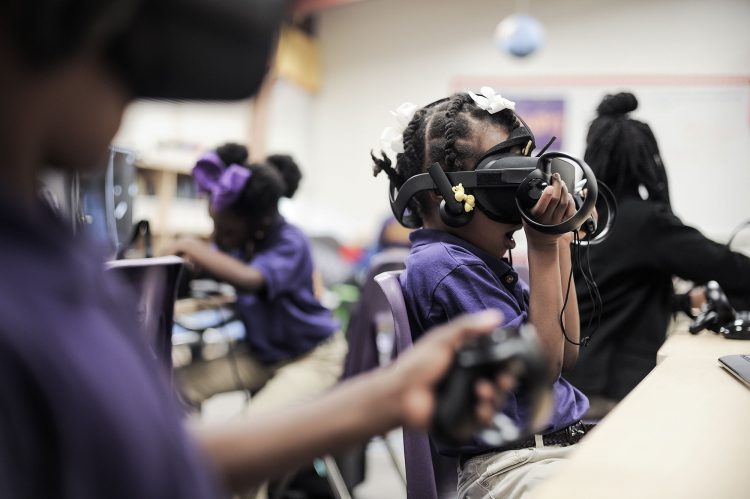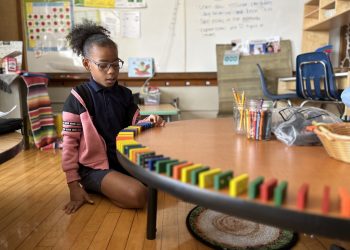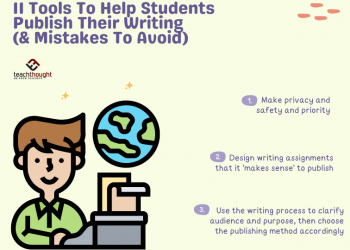Editor’s note: This story led off this week’s Future of Learning newsletter, which is delivered free to subscribers’ inboxes every other Wednesday with trends and top stories about education innovation. Subscribe today!
Sometime in the past year or two, you’ve likely heard the word “metaverse.” It’s the future, the next big frontier of the internet, if you ask technology CEOs or researchers.
While the term has become the latest buzzword in education circles, what it means for teaching and learning largely remains to be seen. Experts say much of what we see marketed as the metaverse from education technology companies isn’t actually the metaverse.
That may be because there’s no clear consensus on what the term means. Kathy Hirsh-Pasek, a professor of psychology at Temple University who’s been researching how the metaverse can be used in education, described it as “a massively immersive experience that is digitally designed to put you into a different space than you’re currently in.”
What the metaverse isn’t is virtual reality, according to Glenn Platt, professor of emerging technology at Ohio’s Miami University. “It’s a misused term,” Platt said. “I think people talk about the metaverse almost in the same way that they would talk about virtual reality, and virtual reality and the metaverse are different things.”
Related: ‘Don’t rush to spend on edtech’
Platt called on educators to remember Second Life, an online platform launched in 2003 that that allowed users to create avatars and interact with other users in a virtual world. Although there was a lot of excitement about it as an educational tool, ultimately it failed to gain traction.
It would be a mistake from an education perspective, he said, to view the metaverse as all about virtual teaching or teaching in the virtual worlds. The metaverse is more about digital identity, according to Platt.
“Schools were very, very late to respond to the internet. Schools are generally behind the game and what happens is kids figure it out long before teachers and principals and all of us as adults are ready to adopt it toward a better education.”
Kathy Hirsh-Pasek, a professor of psychology at Temple University
In a true metaverse experience, your digital identity travels between the physical and virtual worlds, Platt said. With the help of blockchain technology, that identity — your preferences, your achievements, your educational records, other elements of who you are — is maintained across platforms and applications.
“So, when you get credit for classes, when you get badges and certificates and minors and majors and all these kinds of academic credentialing,” Platt said, “it can be cobbled together from various different digital and physical places and all attached to this single identity.”
The metaverse infrastructure is largely still under construction, with tech companies like Meta and gaming platforms like Roblox experiencing growing pains as they expand the space. Edtech companies like STEMuli and Labster, and even Roblox, offer VR learning experiences, but no one as of yet is offering the kind of technology Platt says makes the metaverse really revolutionary.
“I don’t know of anyone who’s really kind of building a technology that allows this kind of mix and match thinking where your identity is sort of tapping into various digital and physical worlds and bringing all of those achievements and academic experiences together,” Platt said.
Related: Reframing edtech to save teachers time and reduce workloads
Platt argues what we don’t want to do is what we saw during the pandemic learning experiment — to replicate a classroom experience in virtual reality. Putting on a headset and seeing yourself sitting in a classroom next to other students is just “physically awkward and I’m not sure that benefits you any more than being in a Zoom classroom would,” he said. “That’s not advancing the pedagogical experience.”
Platt and Hirsh-Pasek both warn that because these technologies are expensive and evolving, districts and states shouldn’t start investing in them right away. Doing so also runs the risk of furthering the digital divide between those who have and can afford another piece of expensive technology and those who don’t, Platt added.
There’s a long way to go “before we can feel confident that every kid in every underfunded school district has access to some sort of virtual reality piece of equipment and has internet that’s going to support the bandwidth that those things require,” he said.
While we may be years away from seeing the metaverse being actively used in our classrooms, with the millions of dollars being poured into its development, we know it’s coming, Hirsh-Pasek said.
In a policy brief earlier this year, she explored how to bring the best educational practices into the metaverse as it’s being created. She urged those designing educational technology for this new space to partner with educators and scientists to make sure it actually works for educators and students.
“I know it’s shiny, and I know it’s really exciting. But I think we would all be better served if we could think about creating these types of experiences for the technology that the students have in hand right now.”
Glenn Platt, professor of emerging technology at Miami University
“Schools were very, very late to respond to the internet,” Hirsh-Pasek said. “Schools are generally behind the game and what happens is kids figure it out long before teachers and principals and all of us as adults are ready to adopt it toward a better education.”
For the metaverse to be successful, those designing these products need to think of them as educational tools that can enhance students’ learning experiences with teachers at the helm, Hirsh-Pasek said. Companies also have a responsibility to make sure these spaces are accessible, safe, equitable and provide an inclusive environment for students.
The potential for learning through these technologies is there, Platt said, and can be “insanely powerful” when done correctly. Take VR learning, for example: An immersive VR app can help students visualize an atom, break it apart and see protons and neutrons. Or it can take students inside the human body to enter a cell or go into space.
Platt encouraged educators to think about using simple technologies to create new types of learning experiences for students. Most cell phones today offer some sort of augmented reality application, and educators can use apps like these instead of trying to build a VR metaverse experience that is only accessible through a headset device.
“I know it’s shiny, and I know it’s really exciting,” Platt said. “But I think we would all be better served if we could think about creating these types of experiences for the technology that the students have in hand right now.”
This story about the metaverse was produced by The Hechinger Report, a nonprofit, independent news organization focused on inequality and innovation in education. Sign up for Hechinger’s newsletter
Related articles
The Hechinger Report provides in-depth, fact-based, unbiased reporting on education that is free to all readers. But that doesn’t mean it’s free to produce. Our work keeps educators and the public informed about pressing issues at schools and on campuses throughout the country. We tell the whole story, even when the details are inconvenient. Help us keep doing that.
Source by hechingerreport.org










